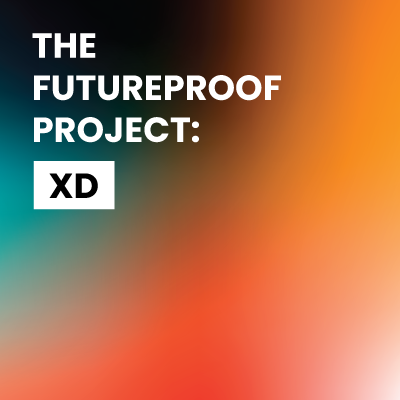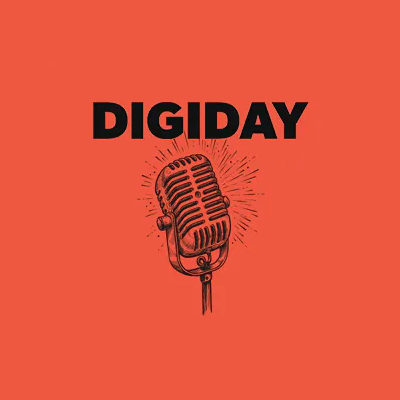The Creative Potential of AI

Generative AI is generating a lot of headlines these days. And for good reason. According to ChatGPT, there’s a new company using AI to generate something being launched every 27 seconds (just kidding… ChatGPT didn’t make that up, I did).
Rumor has is that one start-up is even using AI to generate AI start-ups. (yes, I made that up too).
Our latest Futureproof Project event on The Creative Potential of AI featured two extraordinary members of Traction’s “liquid workforce” Jason Zada and Matt Strain.
Jason is a creative director and videographer that’s lived at the edge of technology since the 90’s! You’re likely familiar with some of his brilliant work like Take this Lollipop and Elf Yourself. He’s been leaning hard into experiments in video and image generation using AI.

Matt was in a unique role at Adobe leading innovation and now consults with companies helping them bridge the gap between research and product design. He’s also been experimenting with ChatGPT and other AI tools—he was just featured in a New York Times story for a 48-page book he wrote for Valentines Day using AI to blend the tenets of traditional Chinese medicine with Western mixology written in the style of the J. Peterman catalog. For real! Now that I have your attention, here's a video and article of how Matt created the book if you want to check it out (if you have access issues and want a PDF, let me know)
NYT Real People -- The Story of an AI Generated Cocktail Book
35 Ways Real People Are Using A.I. Right Now

I thought that rather than actually write this blog post, it was appropriate to give ChatGPT a chance to co-write it with me based on the notes and summary that Fireflies, another AI app, generated from the Zoom call we hosted the event on!
Welcome to a creative and insightful article on the marketing potential of Artificial Intelligence (AI), based on a recent online event from The Futureproof Project. In this discussion, senior brand marketers explored the creative potential of AI, its impact on the future of marketing, and the tools they use to achieve exceptional results.
Come on, ChatGPT! “Welcome to a creative and insightful article”? Your strategy is showing!
As the discussion commenced, the group shared their personal experiences using Chat, GPT4, and other tools. Jason Zada, a storyteller/director, shared his perspective on how he incorporates AI into his creative process, emphasizing that humans will still be required to direct the final result. He also presented an example of an entire music video produced with AI.
The video was three and a half minutes of mind-blowing weirdness. Jason directed this entire thing in less than a day using nothing but text prompts on Midjourney! Check it out below.
The group went on to explore the potential of AI in marketing, including using Chat GPT for scripting and generating assets, creating non-playable characters for video games with Inworld, and automating email and SMS campaigns. They also discussed the use of voice intonation analysis in suicide prevention apps and customer support routing. The conversation shifted to NFTs, particularly a project called The Soul Collection that creates interactive narrative experiences.

Where’s the point of view, Chat GPT? Soul Collection is another Jason Creation (see what I did there, Chat GPT? It’s called being clever.).
Jason discussed the future of AI, emphasizing personalization and interactivity. He shared examples of his work, including a Facebook-connected campaign called Lollipop and an NFT experience called Soul Collection. He also talked about using MidJourney for creating fake films and character design inspiration. Jason believes that brands need to start thinking creatively with AI technology to keep up with the speed of development in this field.
That’s absolutely the case. Will we see a Superbowl spot generated with AI this year? What AI experience will be the most awarded at Cannes? Will the potential of AI be unleashed to produce creativity or efficiency?
Jason explained that most of the tools he uses are accessible to everyone, and it's primarily just trial and error. He gave examples like Runway and Eleven Labs, which anyone can sign up for. The barrier for so long was access to expensive tools, but now technology is becoming more accessible. However, creativity and innovation are still required to achieve exceptional results.
As we speak, hordes of former Social Media Gurus are changing their job titles on LinkedIn to AI Prompt Engineers. What became very clear as the discussion with Jason and Matt went on was that the creativity of the prompt combined with the structure of how the prompt was a secret sauce that would unlock great experiences. Knowledge also matters. Jason is an accomplished filmmaker. He knows the difference between cinematic techniques and film styles, so he can ask the robot for them. I don’t know those things, so I can’t.
The discussion also touched on how data silos can be used to replicate a digital version of oneself or create assistive tools in creative apps based on history and usage. Google's Bard doesn't utilize any information they currently have on individuals while Rewind Me takes footage of everything done on an individual's computer as training data.
This inspired us. Traction is about three weeks away from launching a new website. We are planning on adding some additional functionality to our blog using a tool like Replicate to have an option on blog posts to listen to the author’s robot voice reading it. We’ll add an RSS subscription options, so we are essentially going to dynamically generate a podcast!
Matt shared his experience using Chat GPT, an AI tool that generates ideas and helps with research. He created a 50-page book using the tool and found it helpful for proposals, creative briefs, RFPs, marketing plans, travel agendas, and more. He also mentioned the growing number of companies entering the AI market and how quickly technology is advancing in this space.
This is the book described above in the intro written by Human Adam. It highlights one of the drawbacks of current generative AI tools. It doesn’t have the ability to identify what is interesting to people. I described it as a “48-page book he wrote for Valentine’s Day using AI on the tenets of traditional Chinese medicine and mixology written in the style of the J. Peterman catalog.” Chat GPT described it as a 50-page book. Doesn’t quite have the same ring to it. Doesn’t quite grab a reader by the shirt to pull them in. Chat GPT also doesn’t have the ability to share a link to the New York Times, another nifty trick pulled off by Human Adam.
However, I’m very much looking forward to having SOWs, project estimates, and other business docs be dynamically generated by AI. This is the kind of efficiency that will be make our business stronger and empower our people to focus on more meaningful stuff.

So, what does this mean for the future of marketing? According to the participants, AI has the potential to automate several marketing tasks, including email and SMS campaigns, video retargeting, landing page optimization, and more. However, they also agreed that AI cannot replace human creativity and innovation. AI can be used as a tool to enhance creative processes, but the human touch is still essential.
AI will help us develop and execute ideas, but insight, creativity and taste will be driving forces that enable us to produce meaningful content and experiences that drive business outcomes.
We just used Chat GPT to generate ideas for a pitch we’re working on. Were they any good? Well, they weren’t tight, but of the five we generated, there’s one that might have some legs. A big part of getting there, however, was in the prompt. We already had a strategy we felt was very powerful that was part of the ask. We also referred it to other campaigns, described what we liked about them, and asked for ideas like those. And Chat GPT had no idea which of the ideas it gave us was the gem and which were the garbage.
As the group concluded, they shared some of their favorite tools, including Chat GPT, Mid Journey, Runway, and Eleven Labs. They also emphasized the importance of trial and error, creativity, and innovation. With the barrier to expensive tools now lifted, everyone has access to these tools to experiment and create exceptional results.
Interesting factoid: both Jason and Matt have been experimenting a ton to learn what prompting techniques work to get desired outputs from Generative AI. Jason was straightforward that he wasn’t about to share those learnings. That’s his IP. That kind of methodology IP will become highly valuable in the years to come.
Over the next 12 weeks, Traction will be developing a prompting curriculum. We’re going to start by using it to train our people, but soon our consultants will be able to bring that to bear to train our clients as well. Contact us if you’re interested.
In conclusion, AI has the potential to revolutionize the marketing industry, but it is up to us to think creatively and innovatively to take advantage of this technology. With accessible and affordable AI tools, we can experiment and create exceptional results, keeping up with the rapid development in this field. However, we should always remember that humans are still essential to direct the final outcome, and creativity is still a must-have skill to achieve exceptional results.
Amit Shah told The Futureproof Project a few months ago: ”AI won’t take your job. But a human using AI will.”
For me, the big takeaway from the event was a crystallization of the tangible steps futureproofing requires. I’m glad to be part of a Futureproof Project community helping one another take those steps together.

A few weeks ago, we gathered a group of CMO’s together for dinner and drinks at the Capital Grille in Manhattan, for the 3rd in a series of web 3 sessions called #thefutureproofproject.

It’s highly likely that your marketing and leadership team are considering what your strategy should be for Web3 technologies including Extended Reality, or XR.

Digiday's Mike Burgi caught up with our CEO, Adam Kleinberg last week. Check out this recap about "How Traction evolved into a marketing accelerator."
